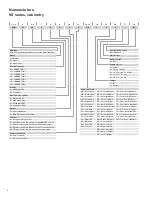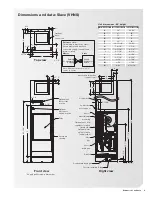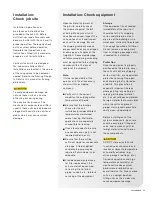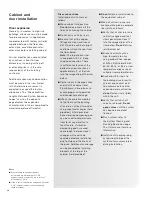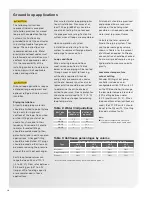
16
The following instructions
represent industry accepted
installation practices for closed
loop, earth coupled heat pump
systems. Instructions are
provided to assist the contractor
in installing trouble free ground
loops. These instructions are
recommendations only. State/
provincial and local codes must
be followed and installation must
conform to all applicable codes.
It is the responsibility of the
installing contractor to determine
and comply with all applicable
codes and regulations.
Ground loop applications require
extended range equipment and
optional refrigerant/water circuit
insulation.
Piping installation
All earth loop piping materials
should be limited to polyethylene
fusion only for in-ground
sections of the loop. Galvanized
or steel fittings should not be
used at any time due to their
tendency to corrode. All plastic
to metal threaded fittings
should be avoided due to their
potential to leak in earth coupled
applications. A flanged fitting
should be substituted. P/T plugs
should be used so that flow can
be measured using the pressure
drop of the unit heat exchanger.
Earth loop temperatures can
range between 25 and 110 °F
(-4 to 43 °C). Flow rates between
2.25 and 3 gpm (2.41 to 3.23
l/m per kW) of cooling capacity
are recommended in these
applications.
Pressure test water loop piping prior
to unit installation. Pressures of at
least 100 psig (689 kPa) should be
used when testing. Do not exceed
the pipe pressure rating. Test entire
system when all loops are assembled.
Upon completion of system
installation and testing, flush the
system to remove all foreign objects
and purge to remove all air.
Loop conditions
When entering loop conditions
meet values specified in Table 3
below or where piping will be routed
through areas subject to freezing,
antifreeze is required. Alcohols
and glycols are commonly used as
antifreeze; however your local sales
representative should be consulted
to determine the antifreeze best
suited to your area. Freeze protection
should be maintained to 15 °F (9 °C)
below the lowest expected entering
loop temperature.
Table 2: Water limit guidelines
EWT Min.
(°F)
Min. flow rate
(GPM/ton)
Antifreeze
required?
50
1.5
No
40-50
3
No
40-50
1.5
Yes
20-40
3
Yes
Ground loop applications
All alcohols should be premixed
and pumped from a reservoir
outside of the building when
possible or introduced under the
water level to prevent fumes.
Calculate the total volume of
fluid in the piping system. Then
use the percentage by volume
shown in Table 3 for the amount
of antifreeze needed. Antifreeze
concentration should be checked
from a well mixed sample using a
hydrometer to measure specific
gravity.
Low water temperature
cutout setting
Zehnder Rittling’s heat pump
controller includes a user
configurable switch (DIP switch 2
on the PCB controller) to change
the low water temperature cutout
(FP1) setting between water
(30 °F) and Glycol (10 °F). When
loop conditions allow (antifreeze is
used), the FP1 DIP switch should
be set to the Glycol (10 °F) setting
to avoid nuisance faults.
Note:
■
■
Low water temperature operation
requires extended range equipment.
Table 3: Antifreeze percentages by volume
Type
Minimum temperature for low temperature protection
10 °F
(-12.2 °C)
15 °F
(-9.4 °C)
20 °F
(-6.7 °C)
25 °F
(-3.9 °C)
Methanol
25%
21%
16%
10%
Propylene glycol
38%
25%
22%
15%
Ethanol*
29%
25%
20%
14%
* Must not be denatured with any petroleum based product

